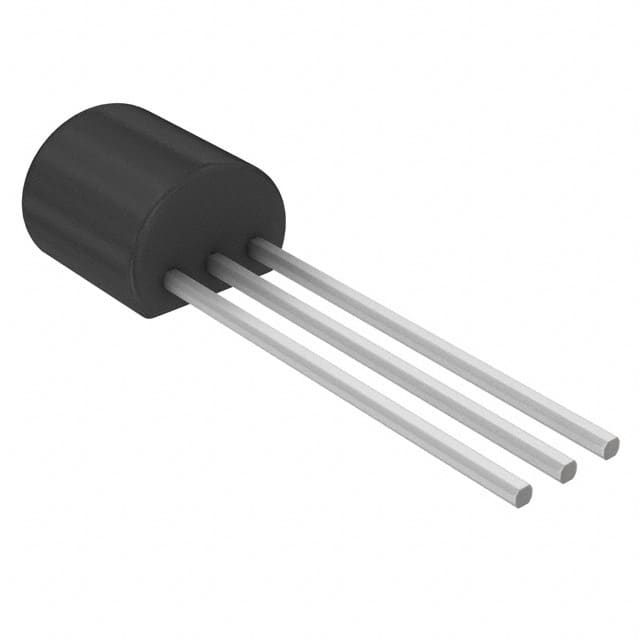Lihat spesifikasi untuk detail produk.

P1087 Product Overview
Introduction
P1087 is a versatile electronic component that belongs to the category of voltage regulators. It is widely used in various electronic devices and systems to ensure stable and regulated power supply. This entry provides an in-depth overview of P1087, including its basic information, specifications, pin configuration, functional features, advantages and disadvantages, working principles, application field plans, and alternative models.
Basic Information Overview
- Category: Voltage Regulator
- Use: Ensures stable and regulated power supply in electronic devices and systems
- Characteristics: High precision, low dropout voltage, thermal shutdown protection
- Package: TO-220, TO-252, TO-263
- Essence: Regulates input voltage to provide a constant output voltage
- Packaging/Quantity: Available in tape and reel packaging with varying quantities
Specifications
- Input Voltage Range: 4.75V to 18V
- Output Voltage Range: 1.2V to 15V
- Output Current: Up to 5A
- Dropout Voltage: 0.6V at 5A
- Operating Temperature Range: -40°C to 125°C
- Line Regulation: 0.04% typical
- Load Regulation: 0.2% typical
Detailed Pin Configuration
The P1087 voltage regulator typically consists of three pins: 1. Input (VIN): Connects to the input voltage source 2. Ground (GND): Connected to the ground reference 3. Output (VOUT): Provides the regulated output voltage
Functional Features
- High Precision: Provides accurate and stable output voltage regulation
- Low Dropout Voltage: Minimizes power loss and heat dissipation
- Thermal Shutdown Protection: Safeguards the regulator from overheating
Advantages and Disadvantages
Advantages
- Reliable and precise voltage regulation
- Wide input voltage range
- Thermal protection for enhanced safety
Disadvantages
- Higher dropout voltage compared to some alternative models
- Limited maximum output current
Working Principles
P1087 operates based on the principle of feedback control, where it compares the actual output voltage to a reference voltage and adjusts the internal circuitry to maintain a constant output voltage despite variations in input voltage and load conditions.
Detailed Application Field Plans
P1087 finds extensive applications in various electronic systems, including but not limited to: - Power supplies for consumer electronics - Automotive electronics - Industrial control systems - Telecommunication equipment - Medical devices
Detailed and Complete Alternative Models
Some alternative models to P1087 include: - LM317: A popular adjustable voltage regulator with similar characteristics - L78xx Series: Fixed output voltage regulators available in various voltage options - LT1083: High-current adjustable voltage regulator suitable for demanding applications
In conclusion, P1087 is a reliable and versatile voltage regulator with precise regulation capabilities, making it suitable for a wide range of electronic applications.
Word Count: 411
Sebutkan 10 pertanyaan dan jawaban umum terkait penerapan P1087 dalam solusi teknis
What is P1087?
- P1087 is a technical standard that specifies requirements for a specific aspect of a technical solution.
How does P1087 impact technical solutions?
- P1087 provides guidelines and specifications that must be followed to ensure compliance with the standard.
Is P1087 mandatory for all technical solutions?
- It depends on the industry and specific requirements, but in many cases, adherence to P1087 is required for regulatory compliance or best practices.
What are the key components of P1087?
- The standard may include specifications for materials, dimensions, performance criteria, testing methods, and other relevant factors.
Where can I find the full text of P1087?
- The full text of P1087 can typically be obtained from the issuing standards organization or purchased through their website.
Are there any common challenges in implementing P1087?
- Some common challenges may include interpreting complex requirements, ensuring compatibility with existing systems, and managing changes to meet the standard.
Does P1087 require certification or testing?
- Depending on the application, P1087 may require products or systems to undergo certification or testing to demonstrate compliance.
Can P1087 be customized for specific applications?
- In some cases, P1087 may allow for customization or adaptation to specific technical solutions while still meeting the standard's requirements.
What are the benefits of adhering to P1087?
- Adhering to P1087 can lead to improved interoperability, reliability, safety, and overall quality of technical solutions.
Are there any updates or revisions to P1087?
- It's important to stay informed about any updates or revisions to P1087 to ensure ongoing compliance with the latest requirements and best practices.

